#37 in Uzbekistan
Dolma: Basic Information
Pronunciation
Alternative Name(s)
Dish Type
Course
Mealtime
Popular Dolma Variations
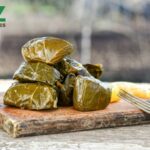
Dolmade
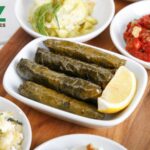
Dolmeh

Tolma
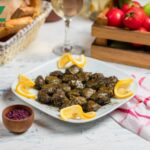
Yarpaq Dolması
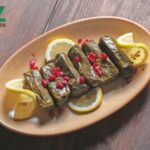
Warak Enab
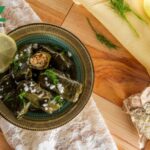
Yalançı Dolma
Dolma: Ingredients and Preparation
Main Ingredients
Main Cooking Method
Preparation Process
Dolma: A Deep Dive
Cultural Significance
Taste
Texture
Aroma
Color
Serving Style
Serving Temperature
Accompaniment
- Sauces (especially yogurt-based ones) and dips
- Rice and flatbread
- Olives
- Salads and pickles
Occasions
Seasons
Special Diets
Calories
Popularity
- West Asia: Turkey, Iran, Israel, Iraq, Lebanon, Syria, Azerbaijan, Georgia, Armenia
- Central Asia: Uzbekistan
- North Africa: Egypt, Libya, Tunisia, Algeria
- The Balkans: Greece, Albania, Serbia, Croatia, Bosnia and Herzegovina
- Others: Moldova, Cyprus, Romania, Sweden
Popular Similar Dishes
- Cabbage Roll
- Chile Relleno
Popular Dining Area
Dolma, literally “stuffed,” is a collection of Ottoman dishes made by stuffing vegetables or leaf wrappings with various ingredients.
More specifically, dolmas refer to both styles, while wrapped ones are often called sarma (literally “wrapped”). Many types of cabbage rolls are famous dolma variations.
Dolmas are widely enjoyed as an appetizer (mezze) or entree in numerous countries that formerly constituted the Ottoman Empire.
This stuffed dish is highly versatile in terms of flavors, ingredients, and accompaniments, with each cuisine having its unique spin on dolmas.
Dolmas are excellent for both everyday and holiday meals, usually served at iftar (the evening fast-breaking meal during Ramadan), Eid al-Fitr (a major Muslim holiday marking the end of Ramadan), and Nowruz (Persian New Year).
Dolmas are even considered the national dish of Azerbaijan, whose art of making dolma was recognized as a UNESCO Intangible Cultural Heritage in 2017.
Keep on reading if you want to know everything about dolmas, such as their history, main ingredients, and well-known variations.
I will also delve into the pros and cons of consuming dolmas, commonly asked questions about them, and similar dishes.
Key Points
Dolma Images
What Is the History of Dolmas?
Many modern dolma recipes were first recorded in the Ottoman Empire in the 19th century.
However, the precursors of dolmas are stuffed fig leaves that date to ancient Greece and were probably incorporated into Ottoman cuisine after the Ottoman acquisition of Greece in the 15th century.
Since then, dolmas were introduced to various lands under Ottoman control. “Dolma” is a Turkish name, and it became popular thanks to the spread of Ottoman cuisine.
The use of cabbage leaves in making dolmas hails from Ottoman and Persian cuisines, as farmers used them as a winter staple in the past.
In the 18th century, when King Charles XII of Sweden returned from his exile in the Ottoman Empire, he introduced cabbage rolls to his home country.
Now that you have a grasp of dolmas’ history, let’s dig into its main ingredients.
What Are Dolmas Made of?
Most dolmas are created from the combination of the following 7 groups of ingredients:
| Ingredients | Characteristics |
|---|---|
| Vegetables | Mainly used for preparing the exterior of dolmas Common options for stuffed dolmas: tomatoes, eggplants, zucchini, bell peppers, etc. Common options for wrapped dolmas: cabbage, grape leaves, chard, kale, etc. Optional vegetables for the filling: onions, tomato paste, carrots, lentils, etc. |
| Grains | Basmati rice or barley (in some Jewish dolma recipes) |
| Protein | Commonly made with ground beef or lamb as the filling Can feature seafood (like mussels, calamari, or fish) or offal (like spleen and intestines) as an encasing |
| Fruits | Can substitute vegetables with quinces, apples, or plums in sweet dolmas |
| Herbs and Spices | Mint, parsley, cilantro, dill, black pepper, etc. |
| Cooking Liquid | Broth or a mixture of water, olive oil, lemon juice, etc. |
| Extra Ingredients | Olive oil, nuts, pomegranate molasses, tomato sauce or paste, etc. |
To see how wonderfully these ingredients combine with one another, you only need to look at the diversity of dolma variations.
What Are Popular Variations of Dolma?
Below are the 27 most renowned dolma variations:
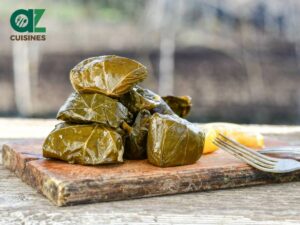
Dolmade
Origin: Greece
Key Ingredients: Grape leaves, rice, minced meat, onions, herbs, olive oil
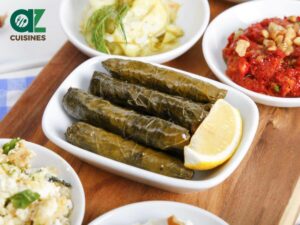
Dolmeh
Origin: Iran
Key Ingredients: Grape leaves, rice, minced meat, onions, garlic, split peas, herbs, spices

Tolma
Origin: Armenia, Georgia
Key Ingredients: Grape leaves, rice, minced meat, onions, tomato sauce, herbs, spices
- Popular variant of dolma in the Caucasus
- Served with garlic yogurt sauce

Yarpaq Dolması
Origin: Azerbaijan
Key Ingredients: Grape leaves, rice, minced meat, onions, herbs
- Has a smaller size and a round or square shape
- Served with garlic yogurt sauce
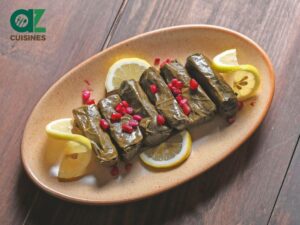
Warak Enab
Origin: Arabic countries, especially Lebanon
Key Ingredients: Grape leaves, rice, minced meat, onions, Middle Eastern spices, olive oil
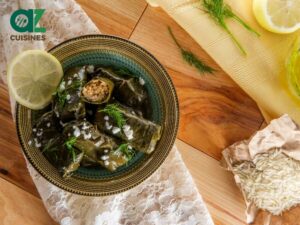
Yalançı Dolma
Origin: Turkey
Key Ingredients: Grape leaves, rice, onions, herbs
- Literally means “fake dolma”
- Also known as yalanchi
- A vegetarian dish

Pasuts Tolma
Origin: Armenia
Key Ingredients: Cabbage leaves, kidney beans, lentils, chickpeas, bulgur, onions, tomato paste, dried sour plums, spices, herbs
- Known as Lenten dolma in English
- Armenian version of cabbage rolls
- A vegetarian dish usually served during Lent and Christmas
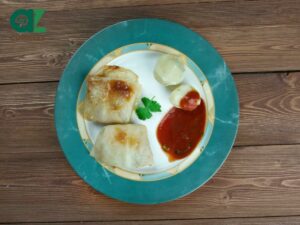
Kåldolmar
Origin: Sweden
Key Ingredients: Cabbage leaves, ground meat, potatoes, onions, rice, milk, cream, spices
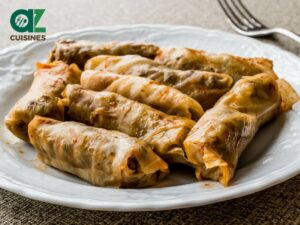
Lahana Dolması
Origin: Turkey
Key Ingredients: Cabbage leaves, ground meat, bulgur, onions, tomato paste, rice, spices
- Also known as Lahana sarması
- Turkish version of cabbage rolls
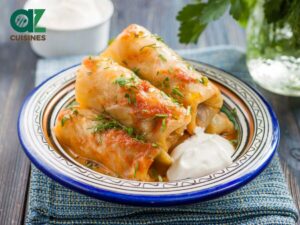
Kələm Dolması
Origin: Azerbaijan
Key Ingredients: Cabbage leaves, ground meat, chickpeas, onions, tomato paste, rice, spices
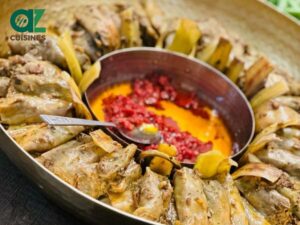
Dolmeh Kalam
Origin: Iran
Key Ingredients: Cabbage leaves, ground meat, chickpeas, onions, tomato paste, rice, spices, nuts (for toppings)
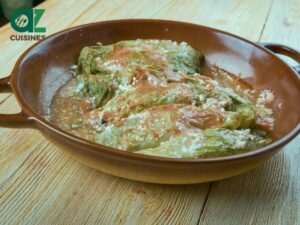
Malfouf Mahshi
Origin: The Levant and the Arab states of the Gulf
Key Ingredients: Cabbage leaves, ground meat, onions, tomato paste, pomegranate molasses, rice, mint, spices
- Also known as mahashi malfoof
- Levantine and Arabic version of cabbage rolls
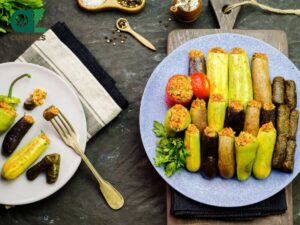
Mahshi Kuronb
Origin: Egypt
Key Ingredients: Cabbage leaves, ground meat, onions, tomatoes, tomato paste, rice, spices
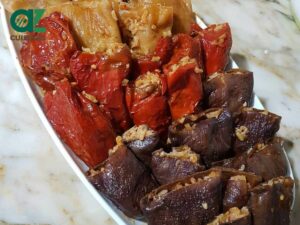
Halep Dolması
Origin: Turkey
Key Ingredients: Eggplants, ground meat, rice, spices, sour plum syrup or lemon juice
- Stuffed eggplant dish
- Named after the Syrian city of Aleppo
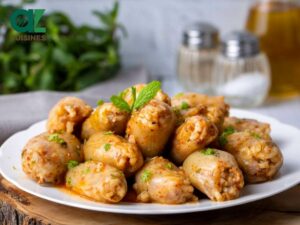
Soğan Dolması
Origin: Bosnia
Key Ingredients: Onions, minced meat, rice, tomato puree, paprika, spices
- Stuffed onion dish
- A specialty of the city of Mostar
- Usually served with yogurt or sour cream
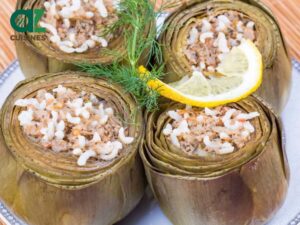
Enginar Dolması
Origin: Turkey
Key Ingredients: Artichoke hearts, seasoned rice, spices, olive oil
- Stuffed artichoke heart dish
- Usually served as a vegetarian dish
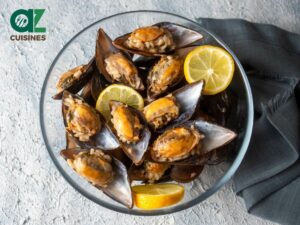
Midye Dolma
Origin: Turkey
Key Ingredients: Mussels, seasoned rice, spices
- Known as stuffed mussels in English
- Popular street food in many Turkish coastal cities

Kalamar Dolma
Origin: Turkey
Key Ingredients: Squids, cheese, onions, garlic, bread crumbs, herbs, tomato sauce
- Stuffed calamari dish
- Cooked by frying or baking

Uskumru Dolma
Origin: Turkey
Key Ingredients: Mackerel, onions, dried fruits, nuts, spices, lemon juice
- Stuffed mackerel dish
- Especially popular in Istanbul
- Made by baking or grilling

Sardalya Dolma
Origin: Turkey
Key Ingredients: Sardines, cheese, onions, tomatoes, herbs
- Stuffed sardine dish
- Usually served as an appetizer at traditional taverns
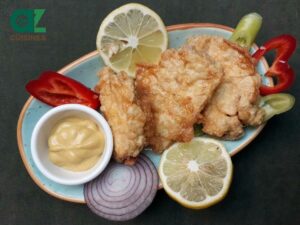
Dalak Dolması
Origin: Armenia
Key Ingredients: Spleens, seasoned rice, spices
- Stuffed spleen dish
- Often served with local anise-flavored liquors

Mumbar Dolma
Origin: Turkey
Key Ingredients: Intestines, mutton, rice, spices
- A type of sausage
- Also known as mumbar or bumbar
- Cooked by boiling and, subsequently, frying
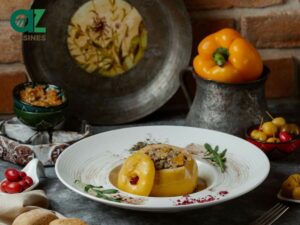
Şekerli Ayva Dolması
Origin: Turkey
Key Ingredients: Quinces, sugar, spices
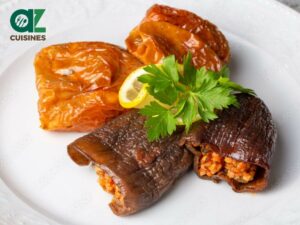
Biber Dolması
Origin: Turkey
Key Ingredients: Bell peppers, ground meat, rice, onions, tomato paste, spices
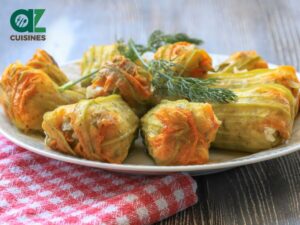
Kabak Dolması
Origin: Turkey
Key Ingredients: Zucchini, ground meat, rice, onions, tomato paste, spices, herbs
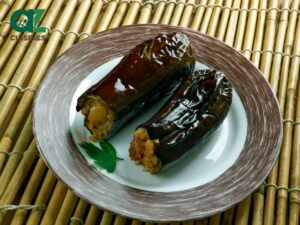
Patlıcan Dolması
Origin: Turkey
Key Ingredients: Eggplants, ground meat, rice, onions, tomato paste, spices, herbs
- Stuffed eggplant dish
- Usually made with dried eggplants
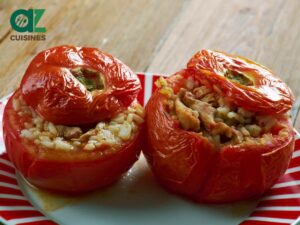
Domates Dolması
Origin: Turkey
Key Ingredients: Tomatoes, ground meat, rice, onions, tomato paste, spices, herbs
- Stuffed tomato dish
- Usually cooked by baking or grilling
Since you are well-versed in how numerous dolma variations are, I will introduce you to the advantages and disadvantages of consuming dolmas.
Pros and Cons of Eating Dolma
Dolmas offer many benefits but present several challenges, which are as follows:
Pros
Cons
After going through the strengths and weaknesses of dolmas, why don’t you discover other aspects of this stuffed dish in the FAQs section?


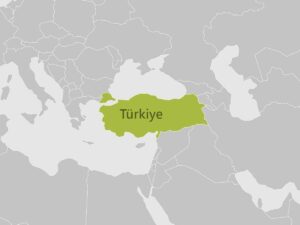




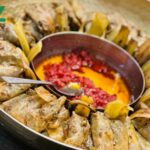
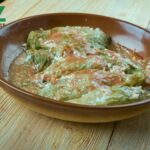

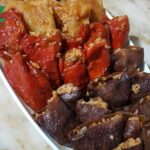

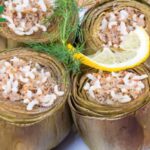







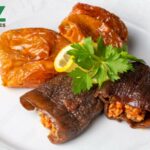

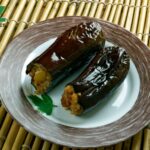
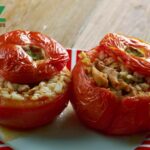
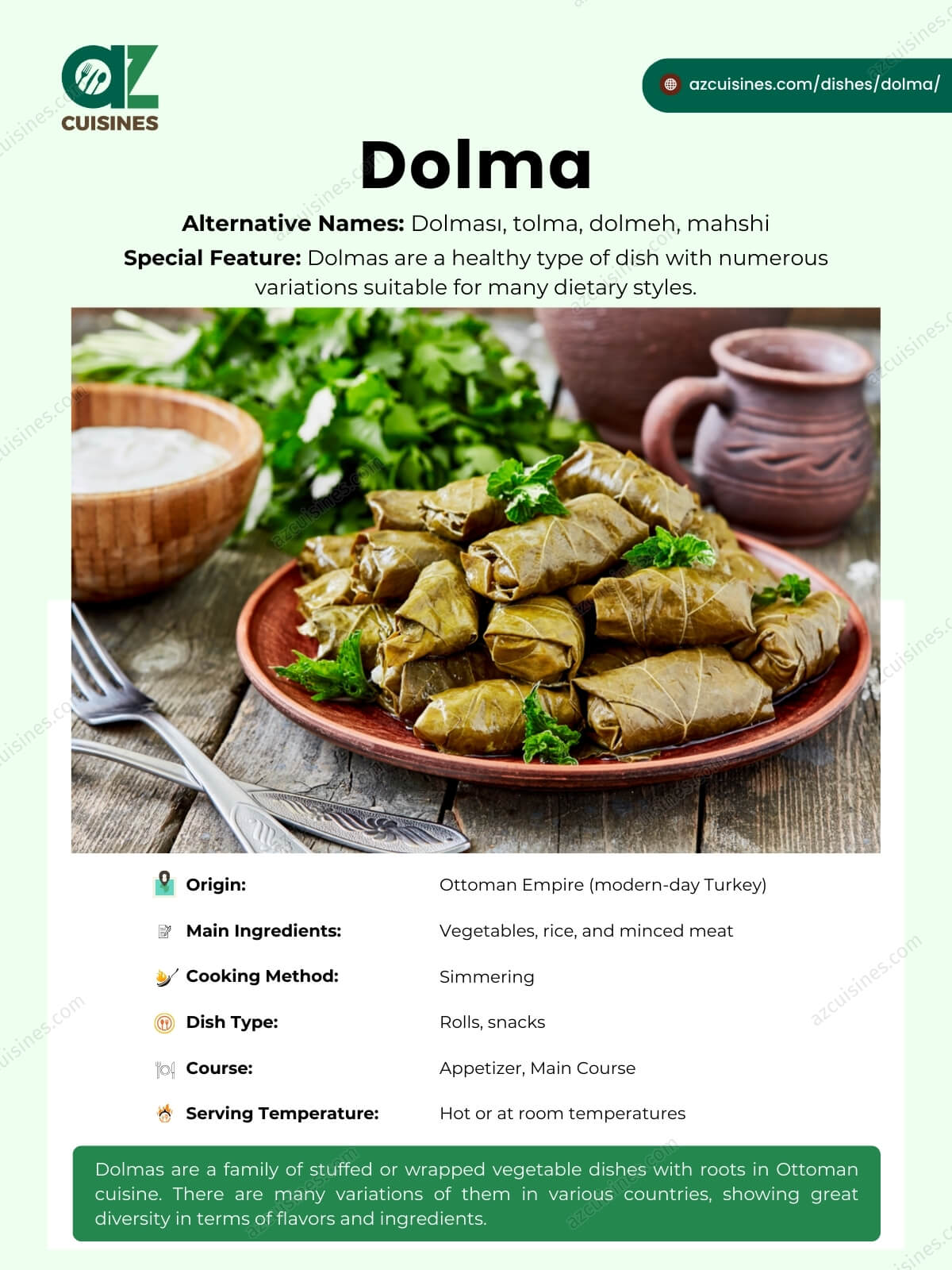

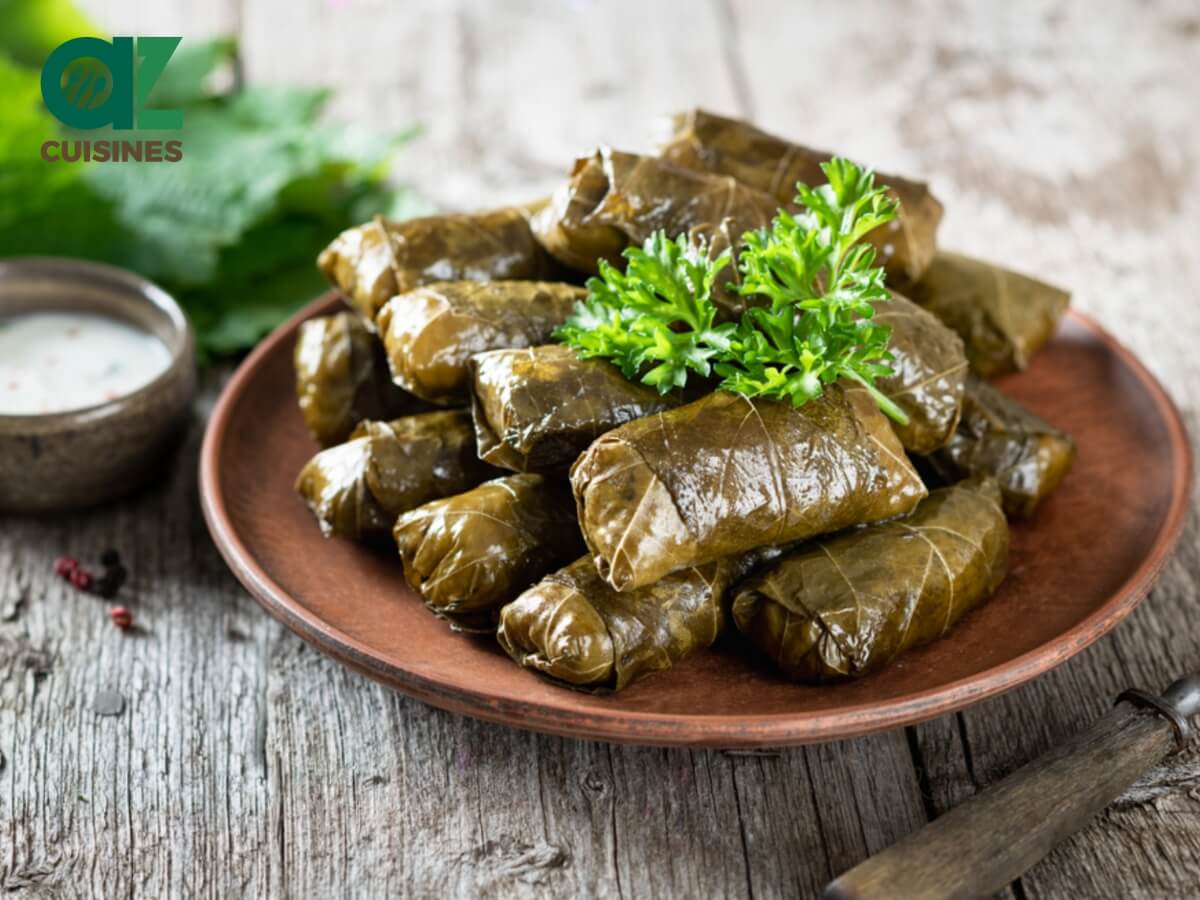
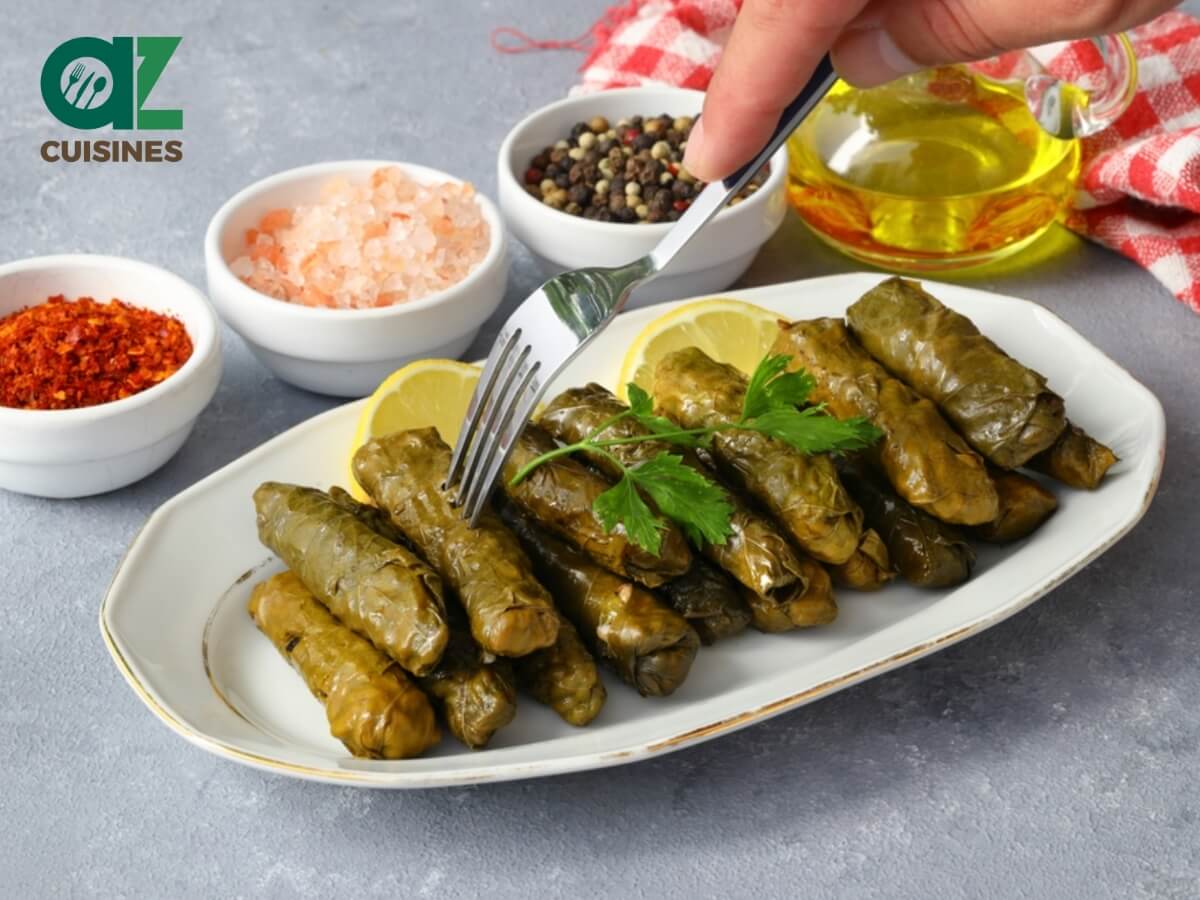
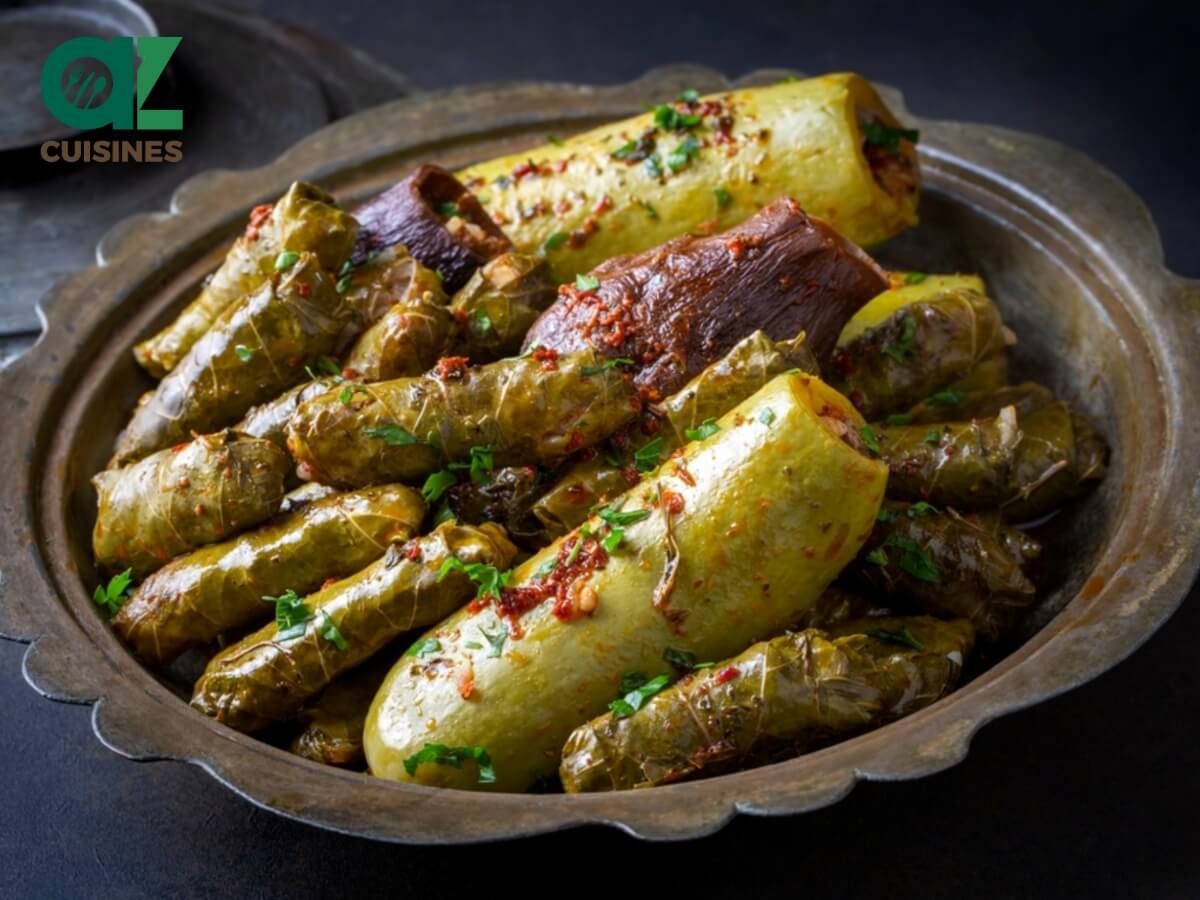
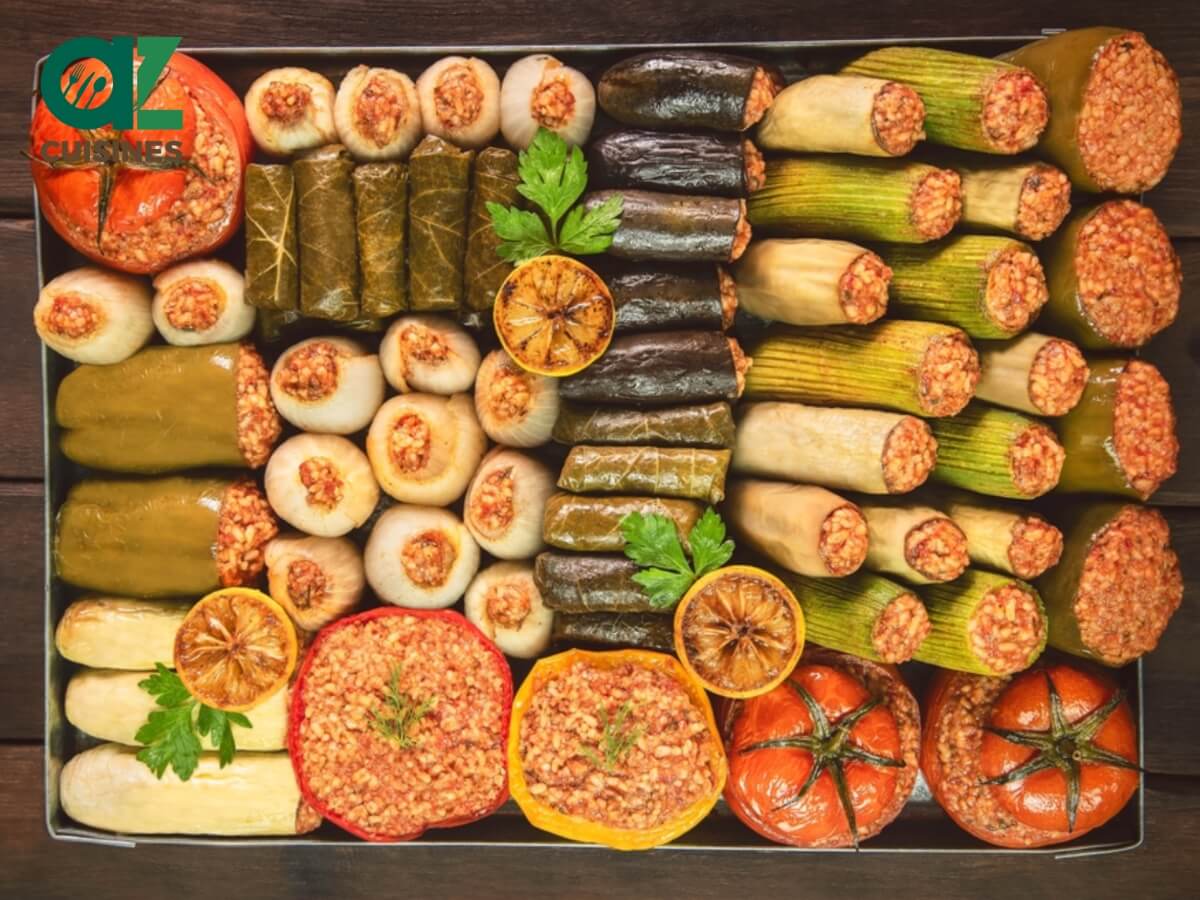
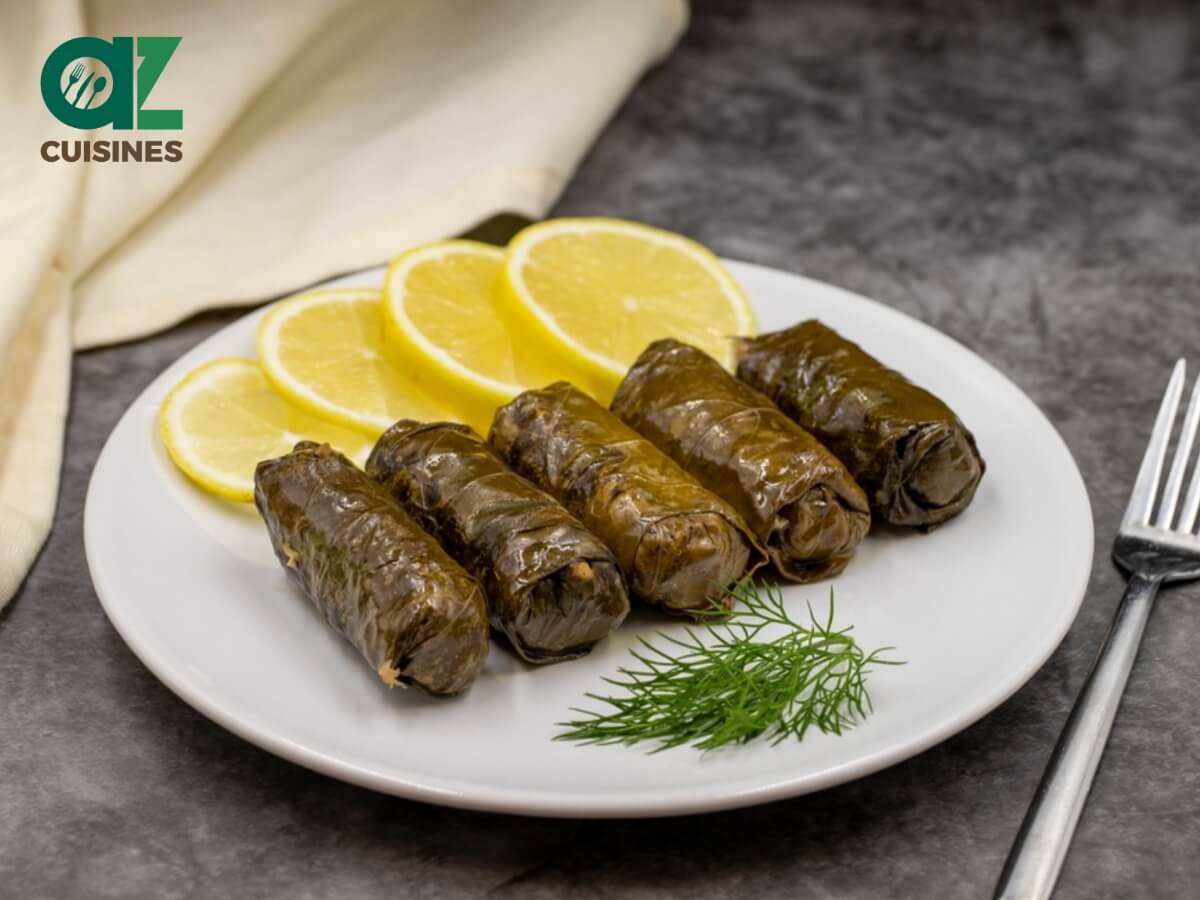

Adam Sam
Senior Food and Drink Editor
Expertise
Food Writer & Recipe Developer, Recipe Tester, Bartender, Cooking-video Maker, Editor In Chief
Education
Adam Sam, an experienced food writer and recipe developer, is passionate about blending diverse culinary traditions, national dishes, and innovative beverages, showcasing his proficiency in both traditional and modern recipe testing.
As the Editor-in-Chief, he elevates culinary content from street food to fine dining, focusing on Western cuisine and types of drinks at azcuisines.com, and is professional in creating engaging cooking videos that simplify complex dishes and ingredients.
His passion for food is evident in his writing, where he uniquely merges various cultures, traditions, and contemporary trends, skillfully combining classic recipes with modern cooking methods.